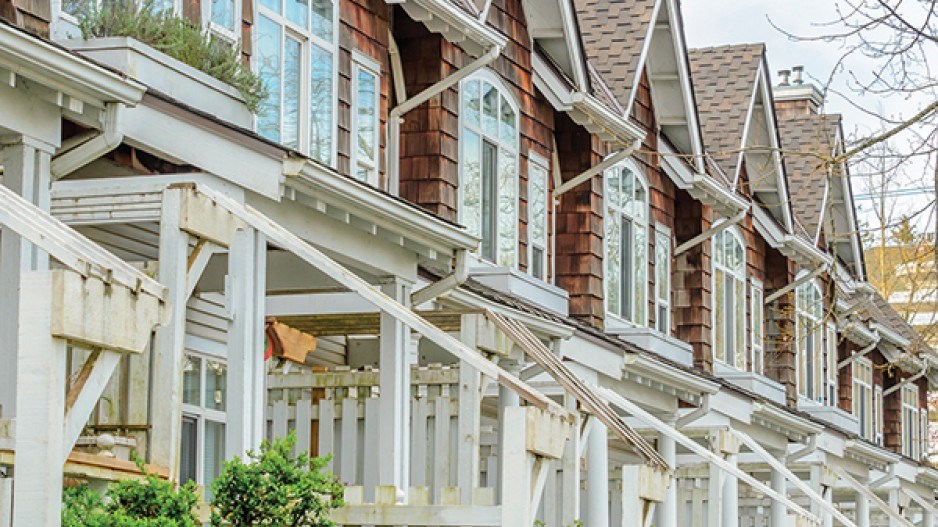The real estate industry south of the Fraser River is being sqeezed by low inverntory, much like most of Greater Vancouver, but sellers are stuck in the past when it comes to pricing.
According to Fraser Valley Real Estate Board (FVREB) statistics, new listings dropped 25.2% between April 2016 and the same month this year, and overall sales declined 24.9% year-over-year. However, the average price for all types of real estate stayed virtually the same, posting a 0.7% decline, showing that sellers continue to refuse to budge on pricing and are holding out for sales comparable to those of 2016, which was a record-breaking year for the region across multiple categories.
April’s numbers followed a showing in March that had the lowest levels of inventory in a decade for that month, while activity in attached sales pushed March housing statistics to their second-highest point of the past decade for that month.
Scott Olson, a Surrey-based realtor who has worked on both residential and commercial listings across the Lower Mainland for the past 32 years, said inventory is tight throughout the region.
“I just sold a townhouse in Chilliwack that sold $22,000 over the list price with four offers in only three days,” Olson said. “In Surrey and Langley the number of offers on listings is even higher – 20 offers or more is common. The supply-demand curve is out of whack and political intervention is exacerbating the problem.”
Olson said high housing taxes are one of the main reasons inventory is so scarce. He added that developers are still encountering too much red tape.
“The problem is that it’s easier for the government to raise taxes than increase supply. Right now it can take two years or longer to get the necessary approvals, and that’s only after you can find a piece of land where the official community plan will allow development.”
Total active inventory last month was 4,913 listings, the lowest for the month of April in 10 years in the Fraser Valley. Overall inventory levels dropped 13.8% compared with April 2016, but slightly rose by 2.2% from March 2017.
FVREB president Gopal Sahota said the region needs more properties to sell as more people look outside of Vancouver for affordable alternatives.
“Growing demand is catching up to the limited inventory we have available currently, and that’s creating a less-than-ideal environment for both buyers and sellers,” Sahota said. “People want to live in the valley right now and we need more listings to support that.”
As of April, the benchmark price for a single-family detached home was $888,900 in the FVREB’s jurisdiction – a 2.3% increase compared with March 2017, and a 14.5% increase compared with April 2016. The benchmark price for townhomes ($446,000) increased 26.2% compared with April of last year and the benchmark price for apartments ($285,400) rose 29.8% in the same time period.
Sahota said there has been a distinct shift in the types of real estate selling across the region. The FVREB’s March news release noted that of the 2,213 sales processed in February, 526 were townhouses and 638 were apartments.
Together the categories accounted in April for more than half of the region’s total sales of all property types for the seventh straight month.
This trend continued through to 984 detached homes sold in April (a 34.5% year-over-year drop) compared with 438 townhomes and 567 apartments – the latter being the only category of real estate to post a year-over-year sales gain, at 6.6%.
However, active listings for apartments in the Fraser Valley dropped by 45.5% year-over-year while the benchmark price rose 29.8% to $285,400. Two of the biggest drops in apartment inventory were in Surrey Central (57.5%) and Surrey North (59.2%) compared with April of last year.
Real Estate Board of Greater Vancouver’s (REBGV) jurisdiction also showed a trend toward multi-family in the first four months of the year, when condominium and townhome sales accounted for 68.5% of all residential transactions, compared with 58.2% over the same period last year. Inventory also remains scarce within the REBGV’s area, as new listings for detached, attached and apartment properties fell by 19.9% compared with April 2016 while posting a 3% increase compared with March 2017.
REBGV president Jill Oudil said new properties will enter the market, but it remains unclear how much inventory will arrive, and when.
“Until more entry-level, or ‘missing middle,’ homes are available for sale in our market, we’ll likely continue to see prices increase,” Oudil said in a news release. “There’s been record building this past year, but much of that inventory isn’t ready to hit the market.”




